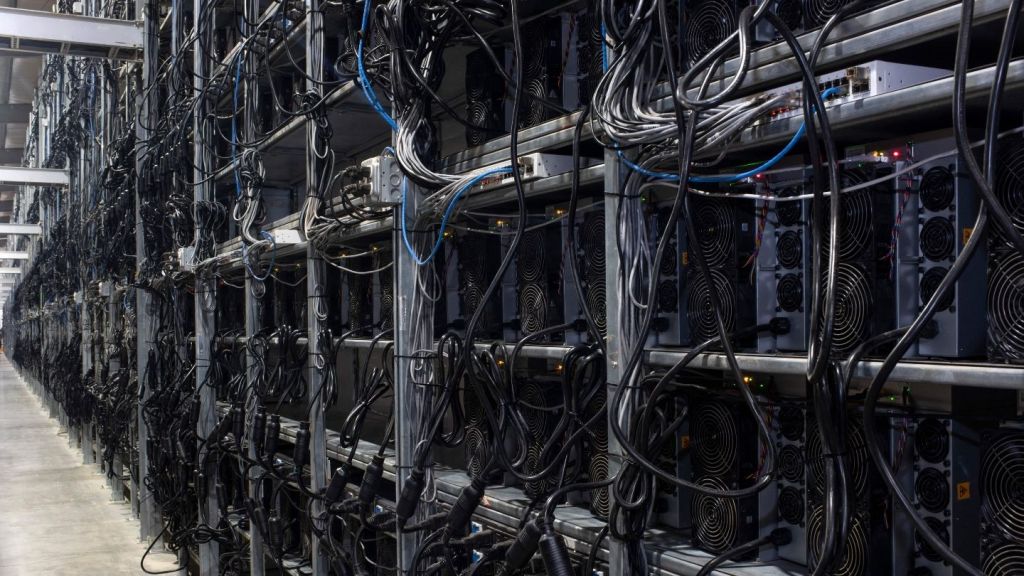It’s no secret that Bitcoin isn’t exactly good for the environment. These days, a single Bitcoin transaction requires as much energy as 10 households use in a week, and the entire network uses more energy than Bulgaria. The larger altcoins aren’t much better: Ethereum, the second largest cryptocurrency, uses as much power as some small Mediterranean countries. It’s no surprise, then, that some cryptocurrency enthusiasts have sought more sustainable solutions to generating magic internet money—a process called mining—such as wind-powered mining rigs or Tesla cars.
A Dutch organization called the Institute of Human Obsolescence (IoHO) recently took the fantasy of sustainable cryptocurrencies to its extreme by harvesting human body heat to mine a variety of cryptocurrencies. But could our bodies really be a viable solution to the cryptocurrency world’s energy problems?
Videos by VICE
“In the last year, the ecological footprint of maintaining the Bitcoin blockchain has been more discussed as it achieved unprecedented levels of inefficiency and levels of energy consumption per transactions,” IoHO founder and artist Manuel Beltrán told me in an email. “In most cases, if some technology is possible to build, people just build it and start to use it without taking its ethical or socio-political implications into consideration. That’s exactly the point we’re challenging.”

The idea of taking advantage of body heat to power the world around us isn’t exactly new—everything from gyms to discotheques have been powered by sweaty meatbags. As The Next Web reported in December, IoHO’s experiment in harvesting body heat was slightly different insofar as it didn’t actually require people to do any physical exertion, such as running on a treadmill or dancing till they drop. In fact, participants just had to lie still for a few hours at a time.
An adult human body generates approximately 100 watts of power while at rest, and about 80 percent of this power is wasted as excess body heat. The IoHO’s idea was to capture some of this excess body heat using wearable arrays of thermoelectric generators. These generators would then convert the body heat to electric energy, which was used to power the computers mining cryptocurrency.
Read More: Can You Mine Cryptocurrency With a Tesla? A Feasibility Study
Since 2015, 37 volunteers contributed 212 hours of mining time to generate a total of 127.2 watts of power. Although the volunteers contributed their bodies to the project for different amounts of time, on average the volunteers each contributed about 0.6 watts/hour of energy. Given that the average adult human produces about 80 watts as excess heat, this means that the IoHO was able to effectively harvest less than 1 percent of the body heat generated by its volunteers.

Due to the small amount of energy that the IoHO was able to harvest from the volunteers, the organization mostly dedicated this energy to mining new cryptocurrencies such as Vertcoin and Startcoin since it required less energy to mine a relatively large number of these coins. According to Beltrán, volunteers kept 80 percent of the cryptocurrencies they generated while the rest was given to the institute.
“We never mined bitcoins because it would be useless to produce them with human heat,” Beltrán told me. “We exclusively mined altcoins and some of them have risen over 46,000% in value. What in the beginning was just small cents now became substantial amounts of money.”
That’s fine and well, but just how useless would the IoHO’s system be if used to mine Bitcoin?
Let’s assume that we’re using an ASIC, a special type of computer chip for mining Bitcoin. We’ll take the Antminer S9 as a benchmark ASIC because of its popularity and efficiency. An Antminer S9 uses 1,375 watthours and mines about 0.6 bitcoins per year, so two of these devices would produce 1.2 Bitcoin a year and require 2,750 watthours.
Since each human is generating 0.6 watthours of energy with the IoHO, it would take nearly 4,600 people lying still, 24/7 for a year using the IoHO device to produce 1.2 bitcoins. At current Bitcoin prices, each person would receive about $3 for their year-long endeavor.
That’s not great, but wearable thermoelectric generators have a lot of room for improvement. What about mining Bitcoin in an ideal scenario, where the generators were perfectly efficient and able to harvest all 80 watts of excess heat produced by the body? Maybe something like the Matrix, where humans are immersed in a big vat of goo that harvests all their energy?
In this scenario, an individual could produce about 700,000 watthours in a year. This means that if 34 people laid still for a year and their excess body heat was harvested with 100 percent efficiency, they could harvest 1.2 bitcoins. That’s a bit better, but a year in the cryptoworld might as well be millennia.
Read More: How to Build An Ethereum Mining Rig
If you wanted to speed things up and mine 1 bitcoin per month, you’re going to need about 320 people lying still around the clock with a perfectly efficient system. To do 1 bitcoin per month with IoHO’s tech—which in terms of efficiency is on par with most affordable wearable thermoelectric generators available today—you’d need around 44,000 people providing their body energy 24/7.
Of course, the IoHO isn’t advocating for a future that looks like the Matrix. Instead, the project was about data ownership and how to effectively harness one’s biological capital. It’s an interesting experiment to be sure, and it’s not difficult to imagine a future where everyone wears bodysuits that power our brain-implanted phones.
Until then, however, it looks like cryptocurrency miners are going to be stuck with old-fashioned, non-renewable energy.




